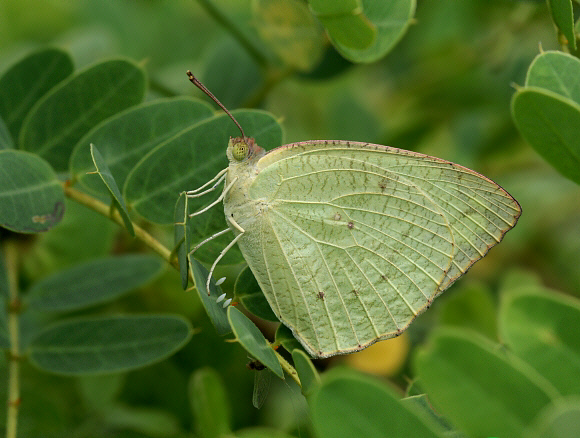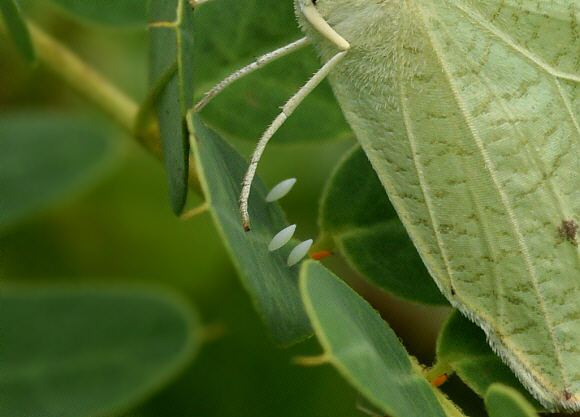
Introduction
There are 6 species in the genus Catopsilia, including gorgophone from Australia, thauruma from Madagascar; pyranthe and scylla from the Oriental region; and florella which is found all across Africa and also in India, Myanmar, Thailand and east to China.
The most widespread members of the genus are pomona and pyranthe, both of which are found from India and Sri Lanka to Malaysia, east to the Philippines, and south through Borneo, Sulawesi, Java, Bali, Timor and New Guinea, to northern Australia.
Habitats
The Mottled Emigrant, as its name implies, is strongly migratory in behavior and can therefore be found in many habitats including Acacia scrub, dry open woodlands, beach hinterlands, gardens and wasteland.
Lifecycle
The greenish-white skittle-shaped eggs are laid either singly or in small clusters of 3 or 4, on the upper or lower surface of leaves of the larval foodplants. These include Cassia, Ormocapum and Senna (Fabaceae). The fully grown caterpillar is pale green with a whitish lateral stripe. It is extremely well camouflaged as it rests along the midrib of a leaf. Pupation takes place away from the foodplant, on the stems of nearby bushes, or on tree trunks, fences or buildings.

Adult behaviour
Males imbibe moisture from damp patches of ground and are attracted to urine, but not in such numbers as pomona. Both sexes commonly visit flowers including Lantana and Catunaregam.
Females indulge in ‘egg-laying runs’ interspersed with long periods of rest. When I first spotted the female depicted at the top of the page, she was flying incessantly from bush to bush in an area of Acacia scrub, testing dozens of different leaves by ‘tasting’ them with her feet. The spines on the legs of female butterflies are used to pierce the surface of leaves, thereby releasing tiny quantities of chemicals which they can recognize to identify their foodplants. Each time this particular female located a Cassia or Ormocapum plant she very quickly deposit a single egg, or sometimes more, before moving on to the next plant. Her egg-laying run lasted for just under 5 minutes, during which time she deposited a total of 14 eggs. She then decided enough was enough, and retired to hide among the foliage of a nearby bush, where she remained stationary for about half an hour before flying off in search of another suitable plant.
